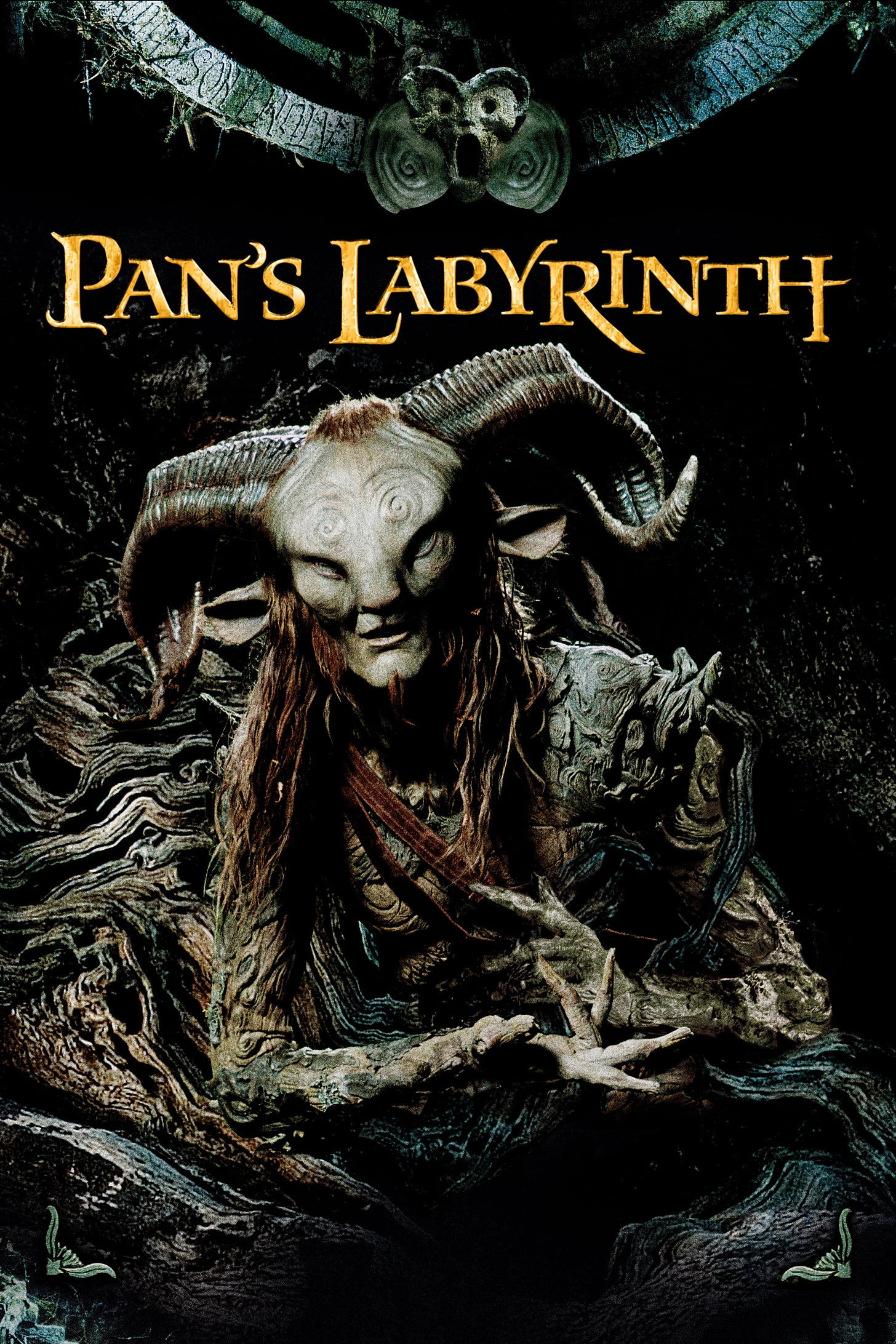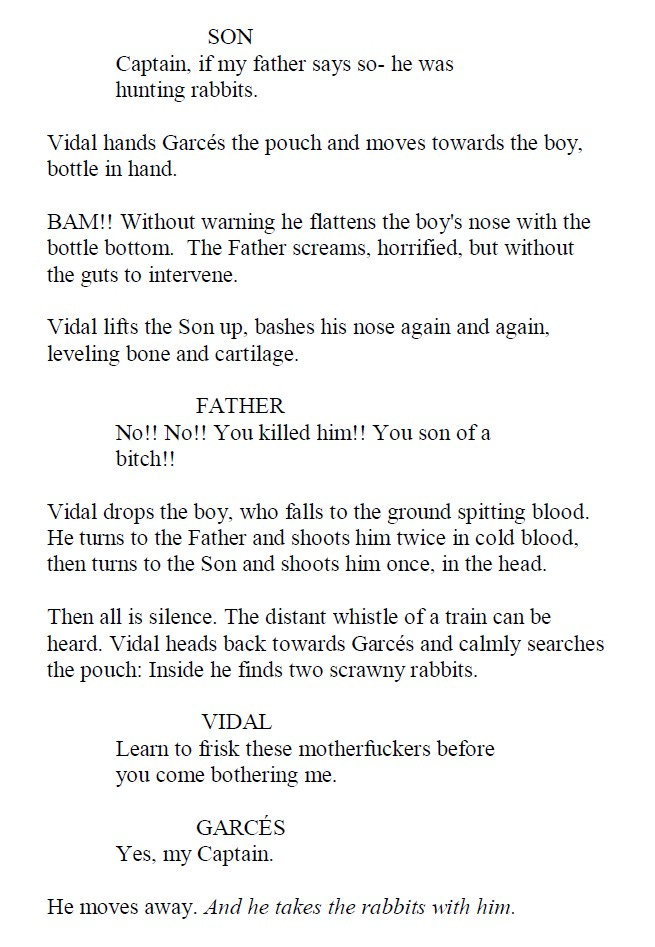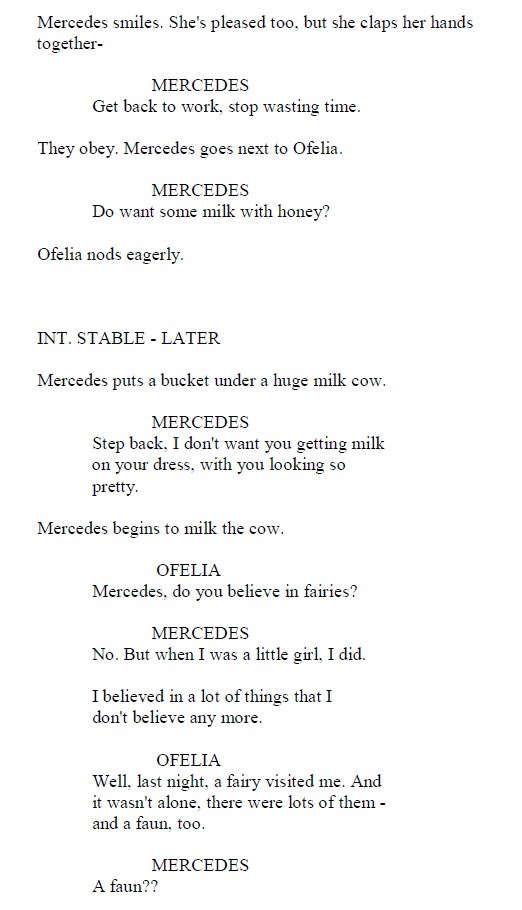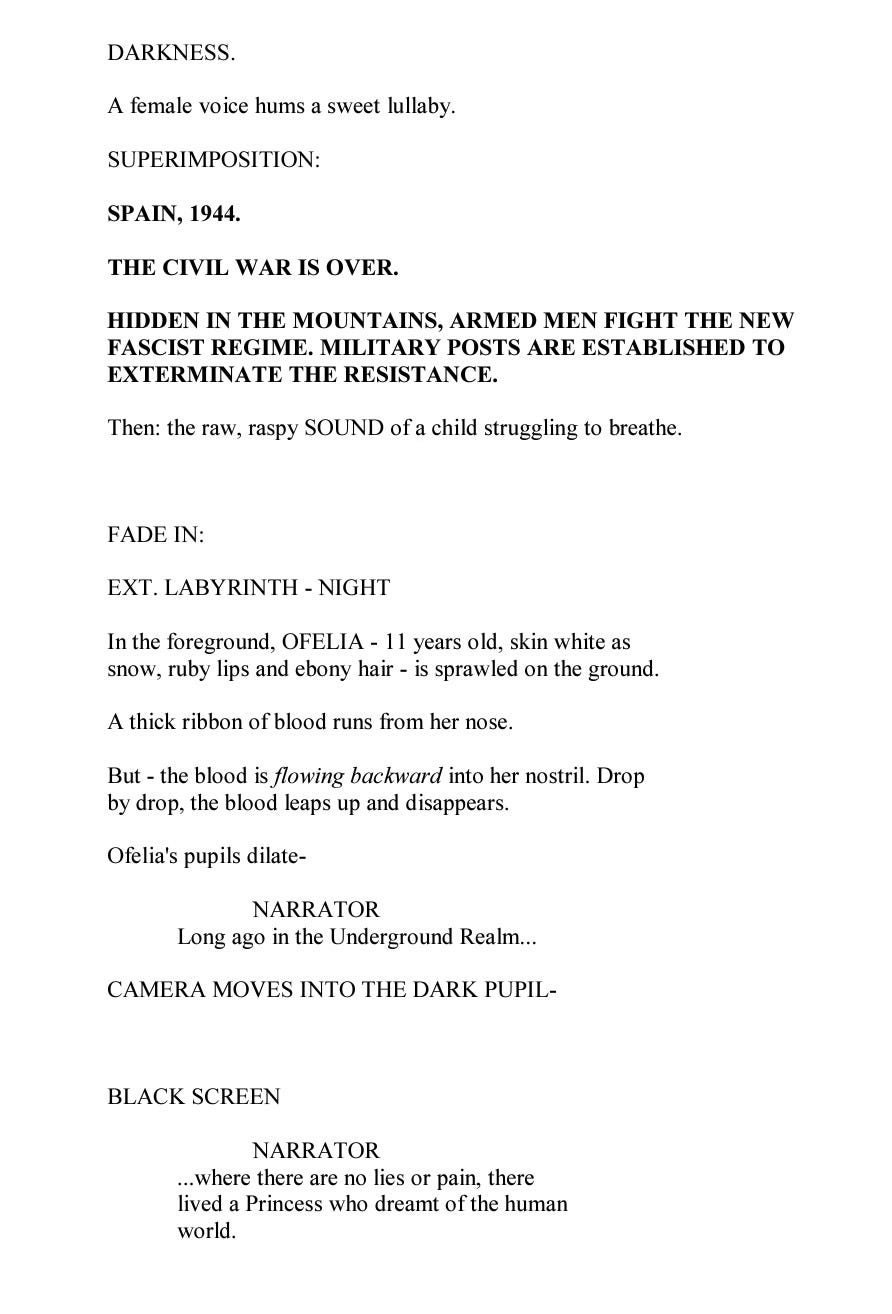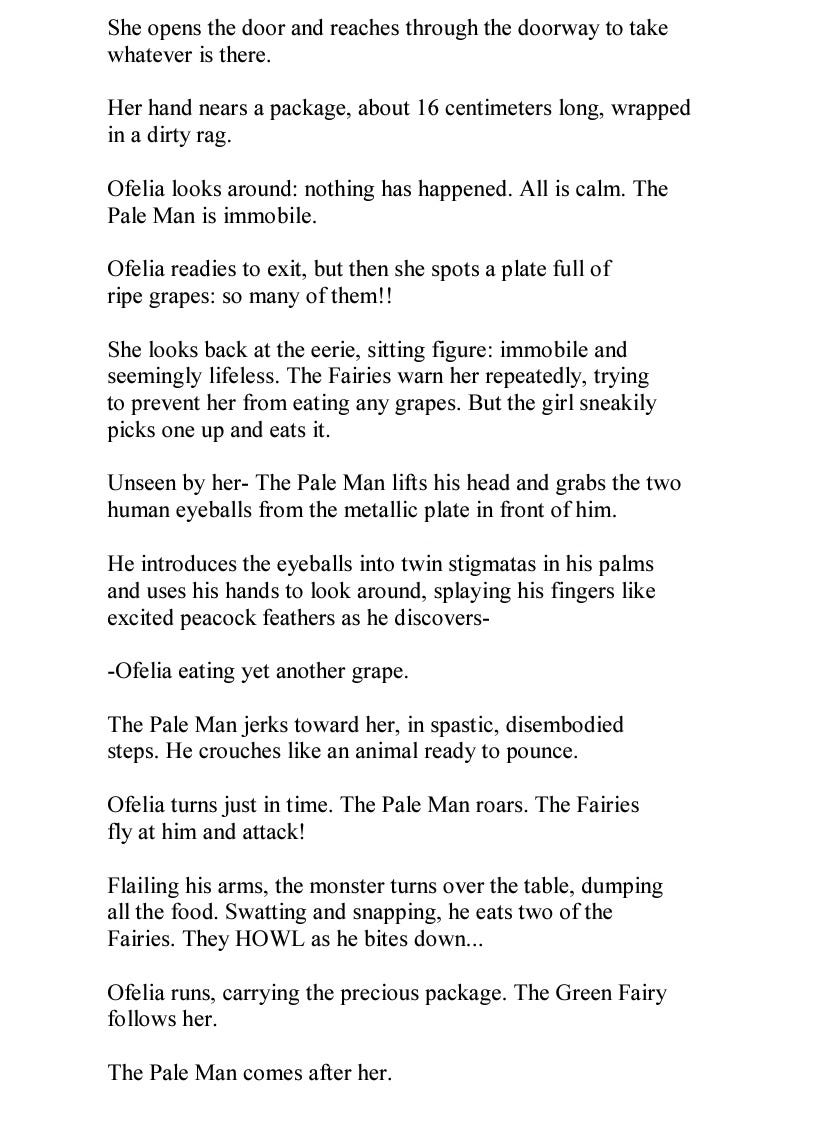Pan's Labyrinth (2006) Script Review | #36 WGA 101 Greatest Scripts of the 21st Century
Haunting, rich, and enchanting, this fairy tale might be Guillermo del Toro's magnum opus.
Logline: During the Spanish Civil War, 10-year-old Ofelia and her pregnant mother move to the countryside to live with her new tyrannical stepfather. When she comes across a decaying labyrinth guarded by a mysterious faun, Ofelia is offered a chance to return to her real father by completing three terrifying tasks. But as the lines between the war and the magical world blur, Ofelia’s life becomes entwined with the fates of the rebels.
Written by: Guillermo del Toro
Pages: 97
Fantasy films rarely get the recognition they sometimes deserve. Pan’s Labyrinth is one of the few straight fantasy entries in the WGA’s list of Greatest Screenplays of the 21st Century (the others being The Lord of the Rings: The Fellowship of the Ring and Spirited Away), an affecting dark fairy tale about a young girl who discovers the existence of a magical world in a time of conflict.
The year is 1944. Although General Franco has won the Spanish Civil War, the resistance refuses to meekly surrender to the fascist regime. Against this tumultuous backdrop, 11-year-old Ofelia moves to the countryside; her mother, Carmen, has recently married Captain Vidal, and he wants her to be near him. True to the stepmother archetype in fairy tales, Vidal is a cruel and tyrannical stepparent; scratch that, he’s cruel and tyrannical, period. He makes Carmen travel in the last trimester of her pregnancy despite it weakening her condition; he barely tolerates Ofelia; and he’s ruthless to people in general, as shown in his treatment of a farmer and son caught hunting for rabbits in the area.
Along the way, Ofelia encounters a stick figure; the stick figure turns out to be a fairy. The new house holds the remnants of a labyrinth. On the first night, a fairy takes her to the labyrinth where she encounters a faun. Is the faun good? Evil? Neither. He is depicted to be closer to a trickster. He claims that Ofelia is the reincarnation of the princess from the opening narration, but if she wishes to return to her magical realm, Ofelia must complete three tasks before the full moon.
At the same time, conflict mounts in the real world. As Ofelia carries out her appointed tasks, and Vidal decides to starve the rebels out. The fates of both sides soon grow entwined; the faun gives Ofelia a mandrake root to halt Carmen’s deteriorating condition. Meanwhile, a young servant, Mercedes, and Dr. Ferreiro are secretly spying on Vidal for the rebels; Mercedes’ brother, Pedro, is the local leader of the rebels. Mercedes and Ofelia bond quickly; if Ofelia reminds Mercedes of herself as a child, then Mercedes represents a possible future for Ofelia when she grows up.
Like any good fantasy story, the purpose of Ofelia’s tasks is to prove her mettle. In the first task, she must retrieve a golden key from the stomach of a giant toad living under a tree. In the second task, she must use the key to retrieve a golden dagger held in the possession of the cannibalistic Pale Man who has eyes in his palms. As for the final task, Ofelia must sacrifice the life of an innocent to enter the magical world.
Each task has different consequences. In the first task, Ofelia ends up muddied and ruining a dress for a dinner thrown by Vidal for the elite. In the second task, her disobedience of instructions almost gets her killed by the Pale Man; in fact, it gets two Fairies killed. In the third task, her refusal to sacrifice her baby half-brother will get her killed. The first two tasks more ‘adventurous’ in nature; the final task is designed to test her moral character.
Guillermo Del Toro shades his characters with complexity. Even Vidal, for all his sadism, is devoted to his newborn son and wrestles with his feelings tied to his father. Mercedes is resourceful; Dr. Ferreiro humane. Ofelia is disobedient but in a manner that demonstrates intelligence versus blind obedience. The faun is not a benign fairy tale godmother; there’s an ambiguity to his words and actions. Del Toro envisioned the creature to be in the same vein of tricksters in several mythologies.
The story took years to fall into place. Del Toro claims it was born out of the image he had as a boy, convinced that a goat man lived in his bedroom closet and would emerge to grab him. He wanted to create a fairy tale closer in spirit to the Brothers Grimm than the adaptations by Walt Disney; darker, more tragic. Over time, he would log details and ideas in a notebook, letting it simmer in a sea of influences.
Lesson: Always keep a notebook and take notes of things. Anything and everything! It will always come in useful!
And by taking an in media res approach and beginning at the very end, an element of suspense is seeded; one that also hints at Ofelia’s fate. Spoiler: It concludes on a note that is both happy and devastating.
The most obvious references are Lewis Carroll’s Alice’s Adventures in Wonderland and C.S. Lewis’s The Chronicles of Narnia; but Del Toro also sought to channel the original fairytale story pioneered by the Brothers Grimm, in which characters are pitted against harsh circumstances in a fantastical world. Another crucial reference were several short stories by Jorge Luis Borges— ‘The Book of Sand,’ ‘The Garden of Forking Paths,’ and ‘Ficciones.’
Lesson: Read widely, read for enjoyment, and don’t be afraid to think intelligently.
The finished version contained in these 97 pages, however, is miles apart from what Del Toro initially envisioned. The original story revolved around a pregnant woman who arrived at a mansion where her husband was carrying out renovations and fell in love with a faun. When the faun asked her to give the blood of her first-born child to enter the magic kingdom, she did it. He was the love of her life, she wanted to be with him. (If the idea of a woman falling in love with a magical creature sounds similar, that’s because it’s the premise of The Shape of Water— proof that ideas can find second life at a different time.) But Del Toro eventually realized there was more to be said about seeing and talking about magic through the eyes of a young girl.
The script’s short page count is attributed to the fact that it is in a Times New Roman format than the standard format, as well as Del Toro’s succinct and evocative writing style that covers a lot of ground. No where is this clearer than the sequence in which the Pale Man comes to life and chases Ofelia.
Since he’s also directing, Del Toro inserts camera movements to convey some of the visuals.
And instead of inserting parentheses to convey a character having different thoughts while talking, he simply leaves space between lines of dialogue, as in this section where Carmen instructs Ofelia on how she is to conduct herself towards her new stepfather.
Pan’s Labyrinth endures for its emotional truthfulness and refusal to sanitize the darkness and ugliness of the world. Death looms over Ofelia’s life, as it does for us all. It is a fairytale both new and familiar. It is exciting, it is heartbreaking. It endures because it is intelligent. Some might express concern that it’s too much for children, both in script and in film formats. Perhaps. But I think they can handle it. It’s too magnificent to keep them away from it.
Notes:
Mikulec, Sven | ‘Pan’s Labyrinth’: A Richly Imagined, Dreamlike Voyage of Self-Discovery and Character Formation (Cinephilia Beyond)
Scott, Sam (December 15, 2021) | The Untold Truth Of Pan's Labyrinth (Looper)



